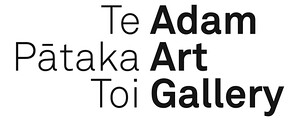October 6–December 20, 2018
PO Box 600
Gate 3, Kelburn Parade
Wellington 6140
New Zealand
Hours: Tuesday–Sunday 11am–5pm
adamartgallery@vuw.ac.nz
“I think there is one more photograph I have to find. The last photograph. I’m still looking for it. It’s out there somewhere. I’m waiting for it to claim me, the last photograph. I don’t know what it is, but when I see it, I’ll know it and I’ll buy it, and it will hang with all the others. And maybe then the life, the story, the quest, will be complete.”
—Peter McLeavey
Peter McLeavey (1936–2015) was a seminal figure in the New Zealand art scene who, from the late 1960s, spent nearly four decades running his influential dealer gallery on Cuba Street in central Wellington. During this time, he championed many canonical figures in New Zealand art history, from modernist innovators Colin McCahon, Gordon Walters and Toss Woollaston, to contemporary artists such as Richard Killeen, Robin White, Peter Robinson and Yvonne Todd. Unbeknownst to many, McLeavey also spent almost thirty years amassing a world-class collection of photographs, the focus of which was entirely distinct from the predominantly New Zealand-based painters he represented.
Curated by Geoffrey Batchen and Deidra Sullivan, Still looking: Peter McLeavey and the last photograph provides insights into both the idiosyncrasies of McLeavey’s collecting and the nature of collecting in general. McLeavey claimed that “collections are essentially maps of the self. A diary of the self. They reflect back the lives of the collectors.” Still looking takes up this proposition, tracing the trajectory of McLeavey’s own collecting and measuring it against his itinerant childhood, his Catholicism, and his various intellectual, emotional and aesthetic interests. McLeavey tended to collect particular photographers in depth and after significant research and consideration. Most of his photographs were acquired from leading dealers in the United States and are among the finest prints by these artists that were available. McLeavey also framed each photograph in an individually designed moulding, accentuating certain aspects of each image and imposing a personal perspective on the viewing experience.
Comprising 93 images, and including correspondence between McLeavey and international dealers, this is the first exhibition to present the full scope of McLeavey’s photography collection. Significant international figures in photography such as William Henry Fox Talbot, Charles Clifford, Francis Frith, Eugène Atget, Berenice Abbott, Bill Brandt, Dorothea Lange, Robert Frank and Joel-Peter Witkin are presented alongside examples of McLeavey’s broader interests in photo-media: photogravures by Léon Vidal, James Nasmyth, and Loewy and Puiseaux, and lithographs by Joseph Beuys, Barbara Kruger, and Sherrie Levine. In addition, McLeavey’s conviction that photography holds a special place in New Zealand history is present through numerous examples of local photographs, from a substantial collection of colonial-era ambrotypes and albumen prints, to work by contemporary artists such as Laurence Aberhart, Andrew Ross, Peter Black and Yvonne Todd.
An illustrated catalogue accompanies the exhibition, with an essay and annotated list of works by the curators. Still looking: Peter McLeavey and the last photograph coincides with the 50th anniversary of the McLeavey Gallery, which continues to operate from its original Cuba Street address. We acknowledge Hilary McLeavey and Olivia McLeavey for their support of this project.
A highlight of the public programme accompanying this exhibition is an exclusive screening on Thursday, December 6 Self portrait in 23 rounds: a chapter in David Wojnarowicz’s life, 1989-1991, Marion Scemama’s new film about David Wojnarowicz. Wojnarowicz was a key figure in the New York art scene of the 1980s. Working in photography, painting, film, music, sculpture, writing, and, after being diagnosed as HIV positive, as an activist, he made a lasting impact for works that dealt with sex, spirituality, love and loss, themes that resonate with the thematics of Still looking: Peter McLeavey and the last photograph.


